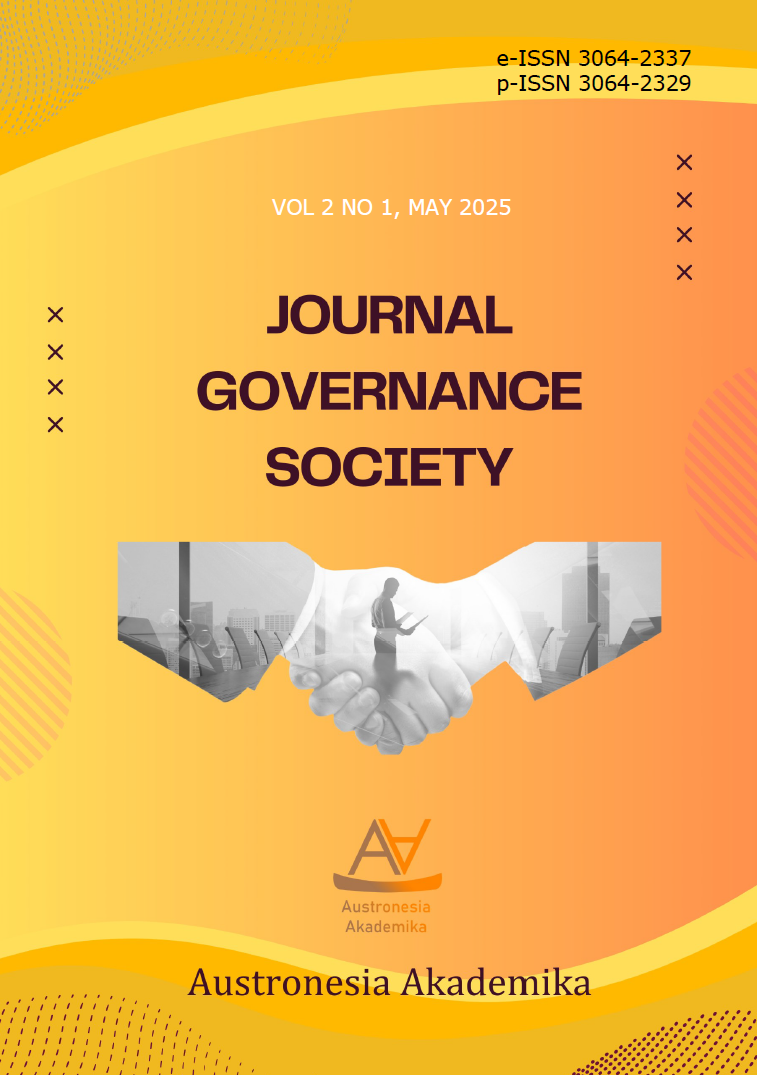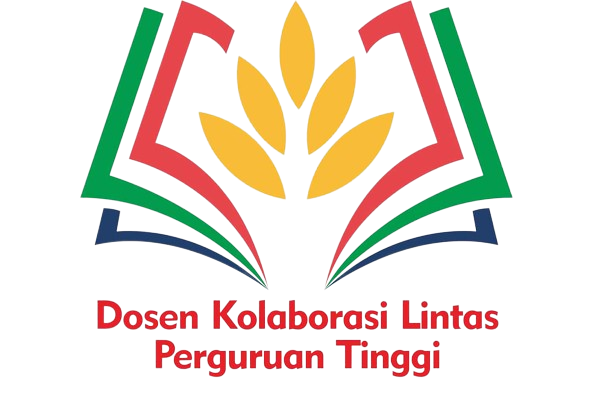Public Perception of the Revitalization of Roro Dompak Port in Tanjungpinang City
DOI:
https://doi.org/10.69812/jgs.v2i1.79Keywords:
Port, Revitalization, Public Perception, Service QualityAbstract
Port infrastructure plays a crucial role in supporting economic growth, connectivity, and public services, particularly in archipelagic regions such as Indonesia. Roro Dompak Port in Tanjungpinang City is a strategic transportation hub connecting the Riau Islands Province to surrounding areas, yet it has faced challenges in infrastructure quality, service efficiency, and user comfort. This study aims to analyze public perception of the port’s revitalization program and its impact on service quality and passenger satisfaction. A quantitative survey approach was applied, involving 518 purposively selected respondents, including passengers, vehicle owners, and logistics operators. Data were collected through a structured questionnaire covering service aspects such as cleanliness, security, facilities, officer responsiveness, ticketing, and departure flow, measured using the Community Satisfaction Index (CSI). The findings indicate that overall satisfaction falls within the “less good” category, with an average score of 2.95. While 66.7% of respondents rated waiting room cleanliness as “good” and improvements such as canopies and parking arrangements positively influenced comfort, other areas require enhancement. The revitalization has been well-received by the public, particularly in terms of new facilities and better passenger experience, but gaps remain in infrastructure capacity and operational performance. In conclusion, the study highlights the importance of aligning technical upgrades with community needs, enhancing service transparency, and fostering collaboration among stakeholders to ensure sustainable port development. The results provide empirical insights to guide strategic improvements that can strengthen Roro Dompak Port’s role in regional economic integration and maritime connectivity.
Downloads
References
Aravot, I. (1996). Integration of future users’ evaluations into the process of urban revitalization. Evaluation and Program Planning, 19(1), 65–78. https://doi.org/10.1016/0149-7189(95)00040-2
Audretsch, D. B., Heger, D., & Veith, T. (2015). Infrastructure and entrepreneurship. Small Business Economics, 44(2), 219–230. https://doi.org/10.1007/S11187-014-9600-6
Creswell, J. W., & Creswell, J. D. (2018). Research design. Qualitative, quantitative, and mixed methods approaches (5th ed.). SAGE Publications.
Guo, Z. H. (2022). Local Revitalization: Support from Local Residents. Sustainability, 14(14), 8298. https://doi.org/10.3390/SU14148298
Heale, R., & Twycross, A. (2015). Validity and reliability in quantitative studies. Evidence-Based Nursing, 18(3), 66–67. https://doi.org/10.1136/EB-2015-102129
Henderson, H., Sullivan, H., & Gleeson, B. (2025). Cultural pluralism and inclusive urban revitalisation: The experience of Dandenong, Melbourne. Progress in Planning, 194, 100943. https://doi.org/10.1016/J.PROGRESS.2025.100943
Jiang, Y., Long, H., Tang, Y. ting, & Deng, W. (2025). Measuring the role of land consolidation to community revitalization in rapidly urbanizing rural China: A perspective of functional supply-demand. Habitat International, 155, 103237. https://doi.org/10.1016/J.HABITATINT.2024.103237
Kusuman, H. P. (2023). Peran Kebijakan Maritim Nasional Dalam Mendukung Pertumbuhan Ekonomi Melalui Transportasi Laut. Jurnal Kesehatan & Disiplin Ilmu, 1(3), 213–223. https://doi.org/10.20527/ISSJ.V5I1.8489
Labandi, L., & Haris, M. (2023). Development of Indonesian Maritime Sovereignty Culture Through Indonesian Maritime Policy with Indonesian Maritime Defense Strategy. The Innovation of Social Studies Journal, 5(1), 33. https://doi.org/10.20527/ISSJ.V5I1.8489
Leavy, P. (2022). Research design : quantitative, qualitative, mixed methods, arts-based, and community-based participatory research approaches. The Guilford Press.
Lee, L. H., & Chang, Z. Y. (2015). A model for predicting tourist carrying capacity and implications for fish conservation. Environmental Biology of Fishes, 98(3), 871–884. https://doi.org/10.1007/S10641-014-0335-7
Liu, S., Ge, J., Bai, M., Yao, M., He, L., & Chen, M. (2022). Toward classification-based sustainable revitalization: Assessing the vitality of traditional villages. Land Use Policy, 116, 106060. https://doi.org/10.1016/J.LANDUSEPOL.2022.106060
Luo, Q., Hu, H., Feng, D., & He, X. (2022). How does broadband infrastructure promote entrepreneurship in China: Evidence from a quasi-natural experiment. Telecommunications Policy, 46(10). https://doi.org/10.1016/j.telpol.2022.102440
Lyu, Y., Abd Malek, M. I., Binti Ja’afar, N. H., Liu, C., Liu, Z., & Han, Z. (2025). Multi-data driven and space syntax approach to urban heritage revitalization: Insights from Zhongshan Rd. Historic District, China. Ain Shams Engineering Journal, 16(8), 103473. https://doi.org/10.1016/J.ASEJ.2025.103473
Manetti, G., Bellucci, M., & Bagnoli, L. (2017). Stakeholder Engagement and Public Information Through Social Media: A Study of Canadian and American Public Transportation Agencies. American Review of Public Administration, 47(8), 991–1009. https://doi.org/10.1177/0275074016649260
Niu, H. J., Wu, E. T., Yen, C. Y., Chen, M. J., & Yu, C. C. (2025). From visitors to vitality: How relational populations support regional revitalization in aging urban and rural areas. Sustainable Futures, 9, 100669. https://doi.org/10.1016/J.SFTR.2025.100669
Norris, C., Nigrelli, C., Newcomer-Johnson, T. A., White, D. P., Beaubien, G. B., Pelka, A., & Mills, M. A. (2022). Defining community revitalization in Great Lakes Areas of Concern and investigating how revitalization can be catalyzed through remediation and restoration. Journal of Great Lakes Research, 48(6), 1432–1443. https://doi.org/10.1016/J.JGLR.2022.05.006
Orr, M., & West, D. M. (2002). Citizens’ Views on Urban Revitalization: The Case of Providence, Rhode Island. Urban Affairs Review, 37(3), 397–419. https://doi.org/10.1177/10780870222185397;PAGE:STRING:ARTICLE/CHAPTER
Putra, A. A., & Djalante, S. (2016). Pengembangan Infrastruktur Pelabuhan Dalam Mendukung Pembangunan Berkelanjutan. Jurnal Ilmiah Media Engineering, 6(1), 433–437. https://ejournal.unsrat.ac.id/v3/index.php/jime/article/view/11627
Rachmadi, A. (2016). Pengembangan Infrastruktur Pelabuhan Panjang Sebagai Pelabuhan Cargo Bertaraf Internasional. Jurnal Pembangunan Wilayah Dan Kota, 12(1), 1–12. https://doi.org/10.14710/PWK.V12I1.11452
Ramlee, M., Omar, D., Yunus, R. M., & Samadi, Z. (2015). Revitalization of Urban Public Spaces: An Overview. Procedia - Social and Behavioral Sciences, 201, 360–367. https://doi.org/10.1016/J.SBSPRO.2015.08.187
Sajidin, M., Nurani, H., Litak, L., & Ningrum, F. C. (2024). Analisis Strategi Pengembangan Infrastruktur Dan Konektivitas Maritim Indonesia. Jurnal Ilmu Hubungan Internasional LINO, 4(1), 23–32. https://doi.org/10.31605/LINO.V4I1.3742
Susanto, P. D. A., Samin, R., & Subiyakto, R. (2024). Evaluasi Pelayanan Publik di Pelabuhan Roro Dompak Provinsi Kepulauan Riau. Ganaya : Jurnal Ilmu Sosial Dan Humaniora, 7(3), 91–103. https://doi.org/10.37329/GANAYA.V7I3.3356
Syadullah, M., & Setyawan, D. (2021). The Impact of Infrastructure Spending on Economic Growth: A Case Study of Indonesia. Komunikácie - Vedecké Listy Žilinskej Univerzity v Žiline, 23(3), 184–192.
Uliyani, D., Handoko, W., Ahyani, A., Sarjana, S., & Gintara, A. N. (2025). Evaluating and Optimizing Ferry Port Performance for Enhanced Service and Economic Growth. 1st International Conference on Civil, Architecture, Environmental Engineering, and Technology , 145–162. https://doi.org/10.1007/978-3-031-94347-8_13
Utama, D. R., Hamsal, M., Abdinagoro, S. B., & Rahim, R. K. (2024). Developing a digital transformation maturity model for port assessment in archipelago countries: The Indonesian case. Transportation Research Interdisciplinary Perspectives, 26, 101146. https://doi.org/10.1016/J.TRIP.2024.101146
Xu, X., & Sakai, A. (2024). The impact on ecosystem services from rural revitalization activity in China Shandong Province, from a human well-being perspective of local residential. Environmental and Sustainability Indicators, 23, 100419. https://doi.org/10.1016/J.INDIC.2024.100419
Yu, L., Wang, Y., & Li, M. (2024). The emergence of counter-urbanisation in China: Can it be a pathway for rural revitalisation? Habitat International, 144, 102998. https://doi.org/10.1016/J.HABITATINT.2023.102998
Yudithia, Y., Yafi, E., & Khan, M. S. (2024). The Penta-Helix Approach in Implementing the Policy of Revitalizing Traditional Markets in Tanjungpinang City. Journal Governance Society , 1(2), 78–89. https://doi.org/10.69812/JGS.V1I2.47
Zhou, T., Jiang, G., Ma, W., Zhang, R., Yang, Y., Tian, Y., & Zhao, Q. (2023). Revitalization of idle rural residential land: Coordinating the potential supply for land consolidation with the demand for rural revitalization. Habitat International, 138, 102867. https://doi.org/10.1016/J.HABITATINT.2023.102867
Downloads
Published
How to Cite
Issue
Section
License
Copyright (c) 2025 Riska Ananda, Tri Asha Lonika, Rizqi Apriani Putri

This work is licensed under a Creative Commons Attribution-ShareAlike 4.0 International License.
You are free to:
- Share — copy and redistribute the material in any medium or format for any purpose, even commercially.
- Adapt — remix, transform, and build upon the material for any purpose, even commercially.
- The licensor cannot revoke these freedoms as long as you follow the license terms.
Under the following terms:
- Attribution — You must give appropriate credit, provide a link to the license, and indicate if changes were made . You may do so in any reasonable manner, but not in any way that suggests the licensor endorses you or your use.
- ShareAlike — If you remix, transform, or build upon the material, you must distribute your contributions under the same license as the original.
- No additional restrictions — You may not apply legal terms or technological measures that legally restrict others from doing anything the license permits.















